Yoga: Vata Balancing Yoga Sequence


As you move through fall and into the winter holidays, you might find your mind overly active with thoughts, your body fatigued or stiff from the shift to dry, colder weather, this yoga practice brings warmth, stability and suppleness through a series of balancing postures, side bends, inversions and meditative breathing. A yoga practice that balances vata dosha (one of the three Ayurvedic principles — it governs movement in the body, the nervous system as well as elimination) should move with a slow and steady pace, focusing on mindful breathing and sharp concentration, with emphasis on rest and restoration at the end of the practice.
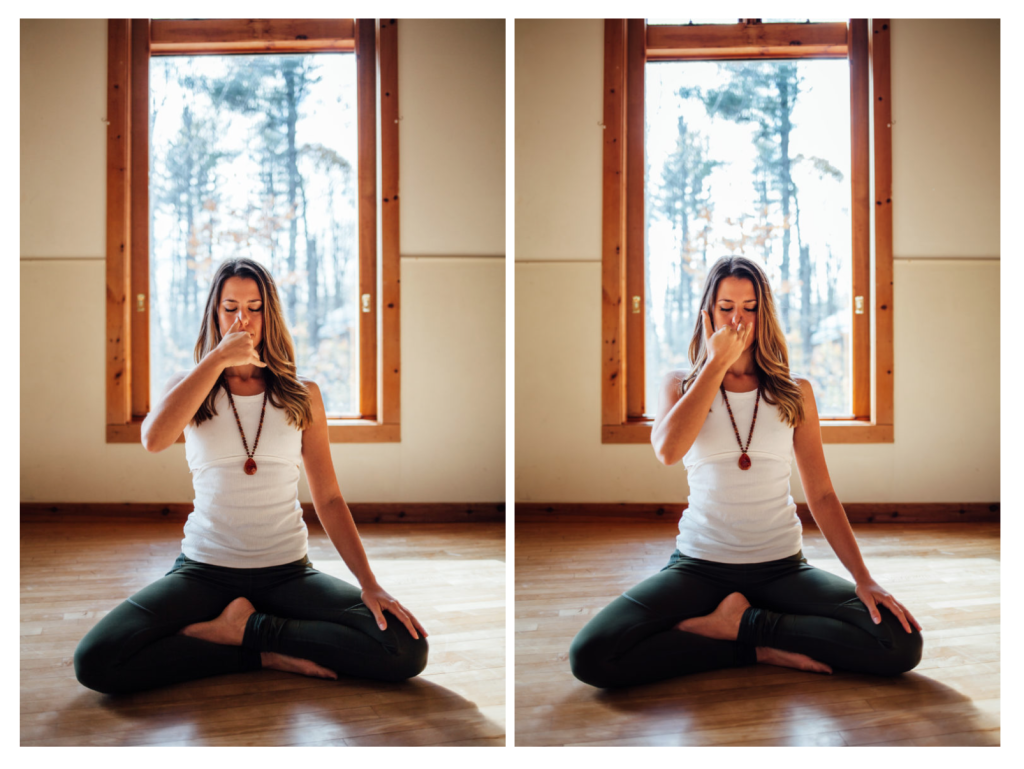

Find a comfortable seated position. With your right hand, cross your pinky finger under your ring finger, then fold your middle and index fingers inward towards the palm. Extend your thumb out. Rest your left hand onto your knee. Relax your shoulders and take five deep breaths through both nostrils. On the last inhale, close the right nostril with the thumb and exhale the breath out through the left nostril. Then, close the left nostril with the crossed fingers and release the right. Take a gentle, steady inhale through right nostril until the breath is full. Close both nostrils and hold the breath still for a moment, then open the left nostril and exhale. Inhale through the left nostril until the breath is full, close both nostrils and exhale through the right. Repeat this motion of breathing through the right and left nostrils for 10 rounds. As you breathe, imagine the prana flowing smoothly up and down both right and left channels. By pairing a steady breath with concentration, this pranayama supports nervous system and activates both right and left hemispheres of the brain.
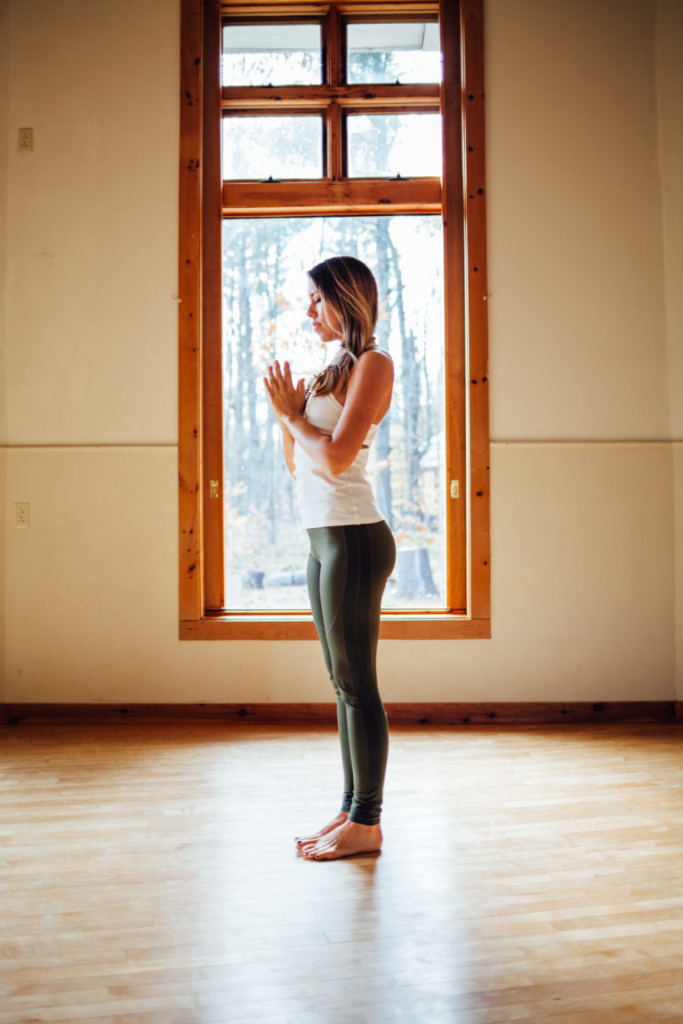

After the breathing practice is complete, come to standing on your mat with your feet together or hip distance apart. Focus on rooting down into your feet firmly and evenly. Allow the arms to rest alongside your body, extending fingers down towards the ground to move the shoulders away from the ears. Lift the heart and gently draw the navel towards the spine. Reach the crown of the head towards the sky, let the chin tilt down slightly toward the chest and ground down through the feet, lengthening the entire spine.. Feel the muscles engaged, hugging the bones firmly. Take several deep breaths here, tuning into the sensations of the body and noticing the stability in your structure. Connect with a steady inhalation and exhalation, this even breath pattern is called sama vritti. It brings peacefulness to the mind and sooths an erratic breathing pattern that comes with a disturbed vata dosha.
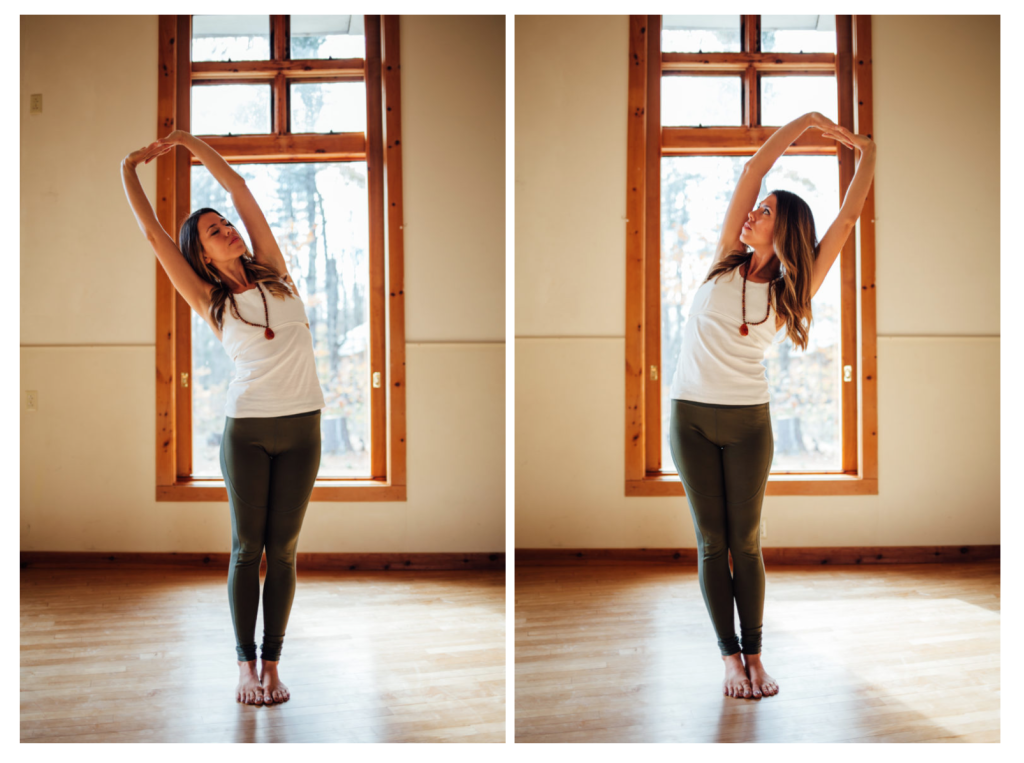

From mountain pose, inhale and raise the arms overhead. Interlace the fingers and press the palms up towards the sky, lengthening the whole spine upwards to create space in the low back. As you exhale, press firmly into both feet and bend the body towards the right side of the mat. Breathe for one steady count in and out, then inhale as you raise back to center. Press into the feet evenly again and exhale the body to the left side of the mat. Alternate right and left 3-5 times, with emphasis on rooting into the ground and engaging the abdominal muscles to support the spinal column as you bend, never stressing the joints.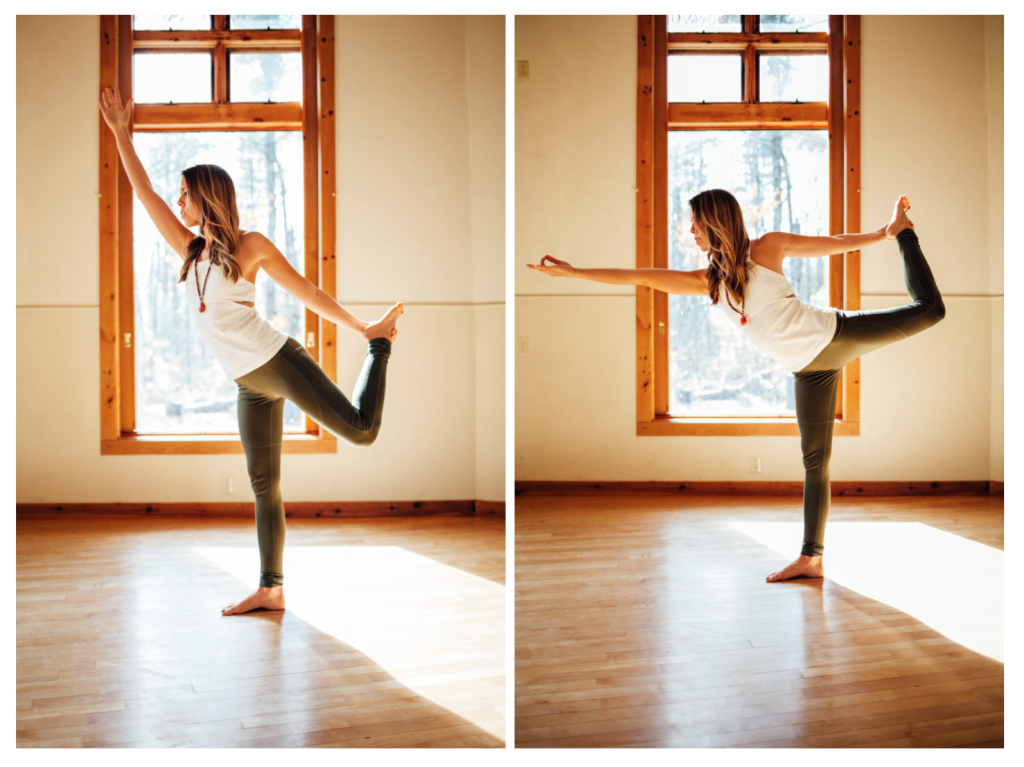

From mountain pose, find a focal point to fix your gaze. Shift your weight onto your right foot and lift your left heel toward your left glute as you bend the knee. Reach back with your left hand and grasp the outside of your left foot or ankle. To avoid compression in your lower back, actively lift your pubic bone toward your navel to engage the abdominal muscles while lengthening tailbone towards the ground. Extend your right arm upwards towards the sky, lift your chest and kick the foot into the hand. Hold here with the knees together, or begin to hinge forward at the hips drawing the body parallel to the ground. Equal action of pulling the foot backwards and extending the chest forward with a fixed gaze promotes steady support for balancing. Alert concentration in balancing postures takes an overactive mind to a quiet and focused one.
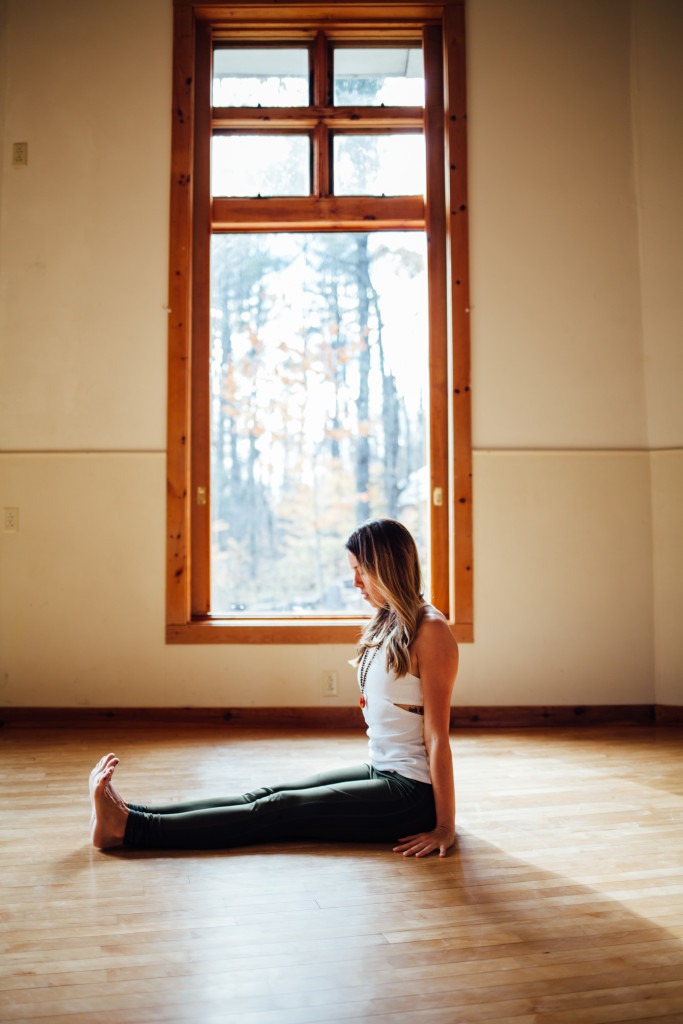

Sit down on your mat. Extend your legs straight out straight out in front of you and place your hands by your hips. Place your fingers and palms flat on the floor and straighten your arms to extend the spine, without drawing the shoulders to the ears. Keep space and length through the neck as you draw the shoulder blades down the back. Lift the chest and drop the chin down to nestle between the collarbones. Breathe deeply for 5-10 breaths. This simple, but powerful practice is grounding for root chakra while the active breath directs heat into the abdomen, manipura chakra.
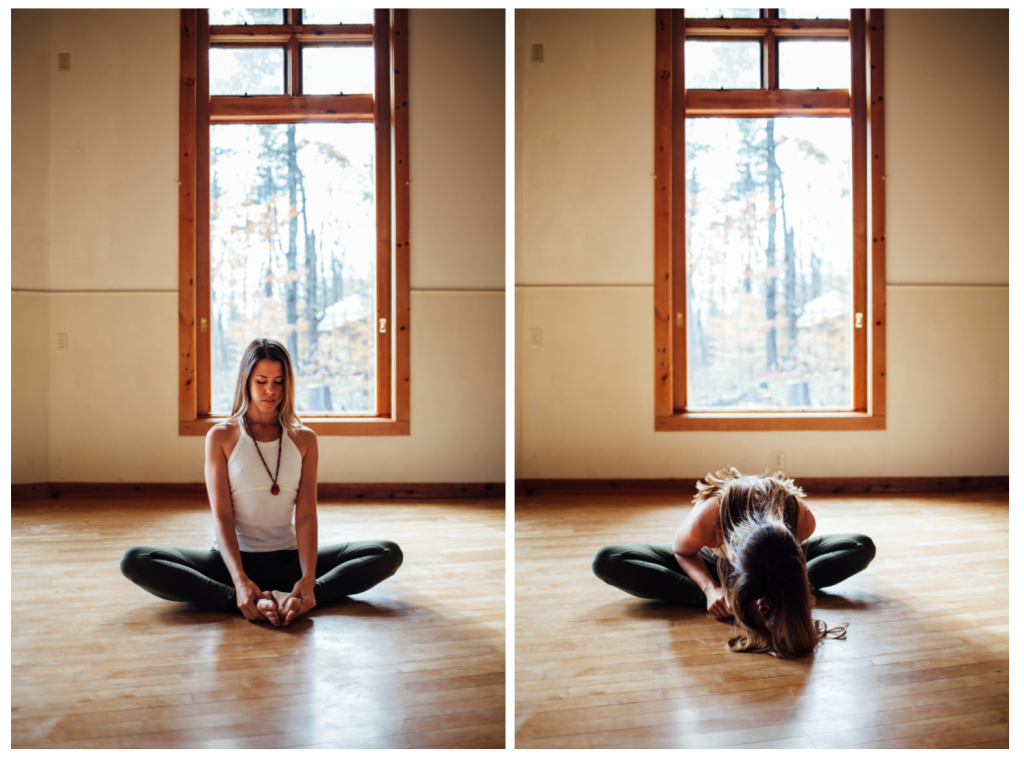

From staff pose, bend your knees and bring the soles of your feet together to touch. Bring your heels as close to your pelvis as you can without feeling pressure or pain in your knees. Push the outer edges of your feet firmly into the floor and wrap your hands around your feet or ankles. With the pelvis in a neutral position and the body upright, squeeze the gluteal muscles to activate the knees downward towards the ground, never pushing or forcing. Stay here or recline your body forward, ensuring that your spine remains long and neutral by bending from the hip joints as opposed to the upper back. Hold for 3-5 breaths.
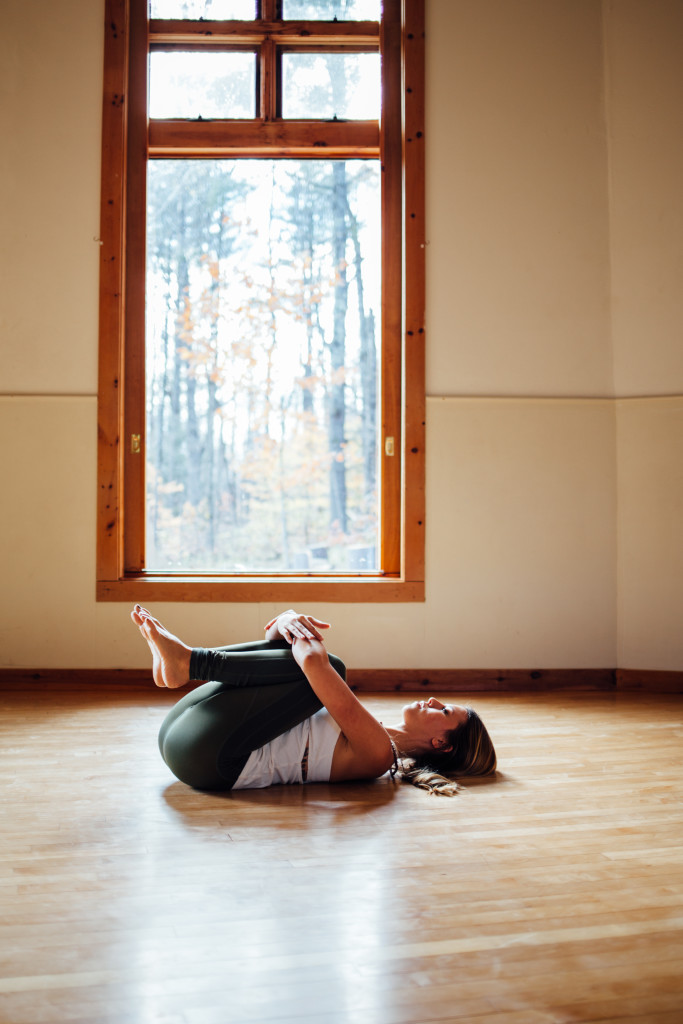

Lie on your back and draw your knees toward your chest. Wrap your hands or arms around the legs. Take 5-10 deep breaths, with each exhale drawing the knees closer into the chest. The pressure on the abdomen improves digestion, releases bloating from the belly and tightness in the low back.
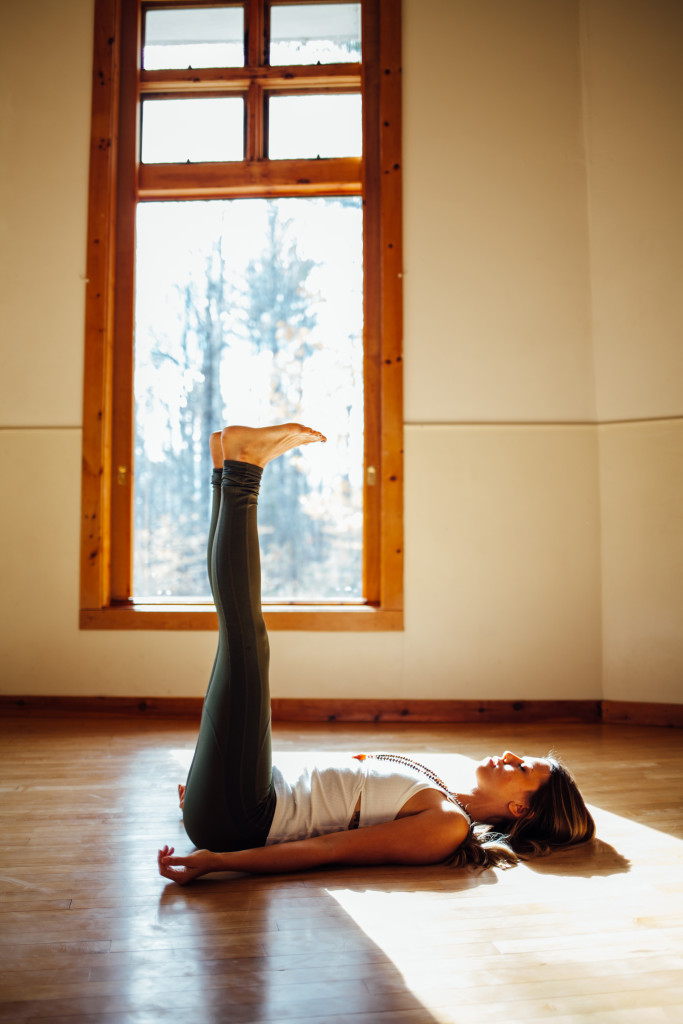

Come to a wall and roll onto your back, straighten the legs to the wall. The backs of the thighs, calves and/or heels will rest on the wall. Rest one hand on the heart and one hand on the belly for a calming, nurturing effect. Close the eyes and rest in this inversion for 5-10 minutes.
Savasana (Corpse Pose)
Lie comfortably on the floor, using a blanket or other covering to keep warm. Release any controlled breathing and fully relax all effort for 5 to 15 minutes. The longer the better, allowing time to rest and integrate the work from your practice and day.
—–
Images by Emily Pearl Creative
 [wpmenucart]
[wpmenucart]


